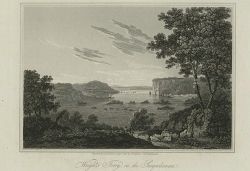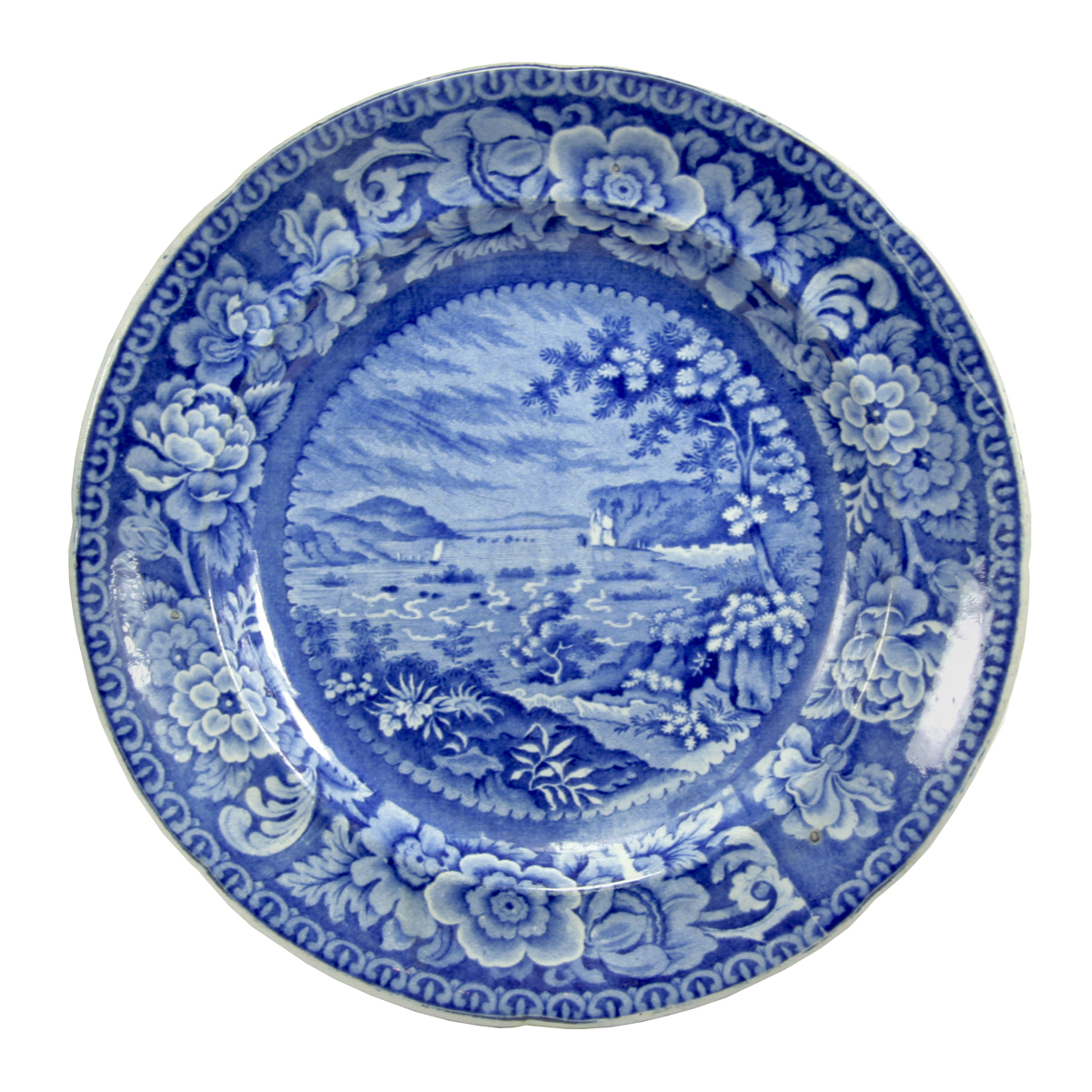
|
Print Title: WRIGHT'S FERRY on the SUSQUEHANNA, PENNSYLVANIA Description:
Colored aquatint, by T, Cartwright, after an original artwork by George Beck, published London 1809
The engraving is inscribed lower left Drawn by G. Beck, lower right Engraved by T. Cartwright and centre above the title Published Jany. 1, 1809, by Geo. Nightingale, No. 143 Leadenhall Street, London.
The landscape in the engraving shows the site, where, in 1730, John Wright was granted a patent to operate the first ferry to cross the wide and wild Susquehanna River. He also built a ferry house and a tavern on the eastern shore establishing a town that eventually became Columbia, Pa. The ferry itself consisted of two dugout canoes fastened together with carriage and wagon wheels. Traffic heading west from Lancaster, Philadelphia, and other nearby towns regularly traveled through Columbia, using the ferry to cross the Susquehanna. As traffic flow increased, the ferry grew, to the point of including canoes, rafts, flatboats, and steamboats, and was capable of handling Conestoga Wagons and other large vehicles. Due to the volume of traffic, however, wagons, freight, supplies and people often became backed up, creating a waiting period of several days to cross the river. A covered bridge was constructed in 1812-14 and now Wright’s Ferry is remembered in the name of the 7,000 span bridge that carries four lanes of traffic along Route 30 and over the Susquehanna.
Print Source:
George Beck, a landscape painter born in Staffordshire England in 1746, moved to the United States in 1795 and eventually settled in Lexington, Kentucky where he died in 1812. Several of his American landscapes were engraved and published in various editions and over a number of years. An almost identical engraving of Wright's Ferry by G. Cooke was inscribed from a Print by Permission of Mr Nightingale and published in London by Longman Hurst Rees Orme Brown Paternoster Row April 1, 1812. 
View all source prints »
|



